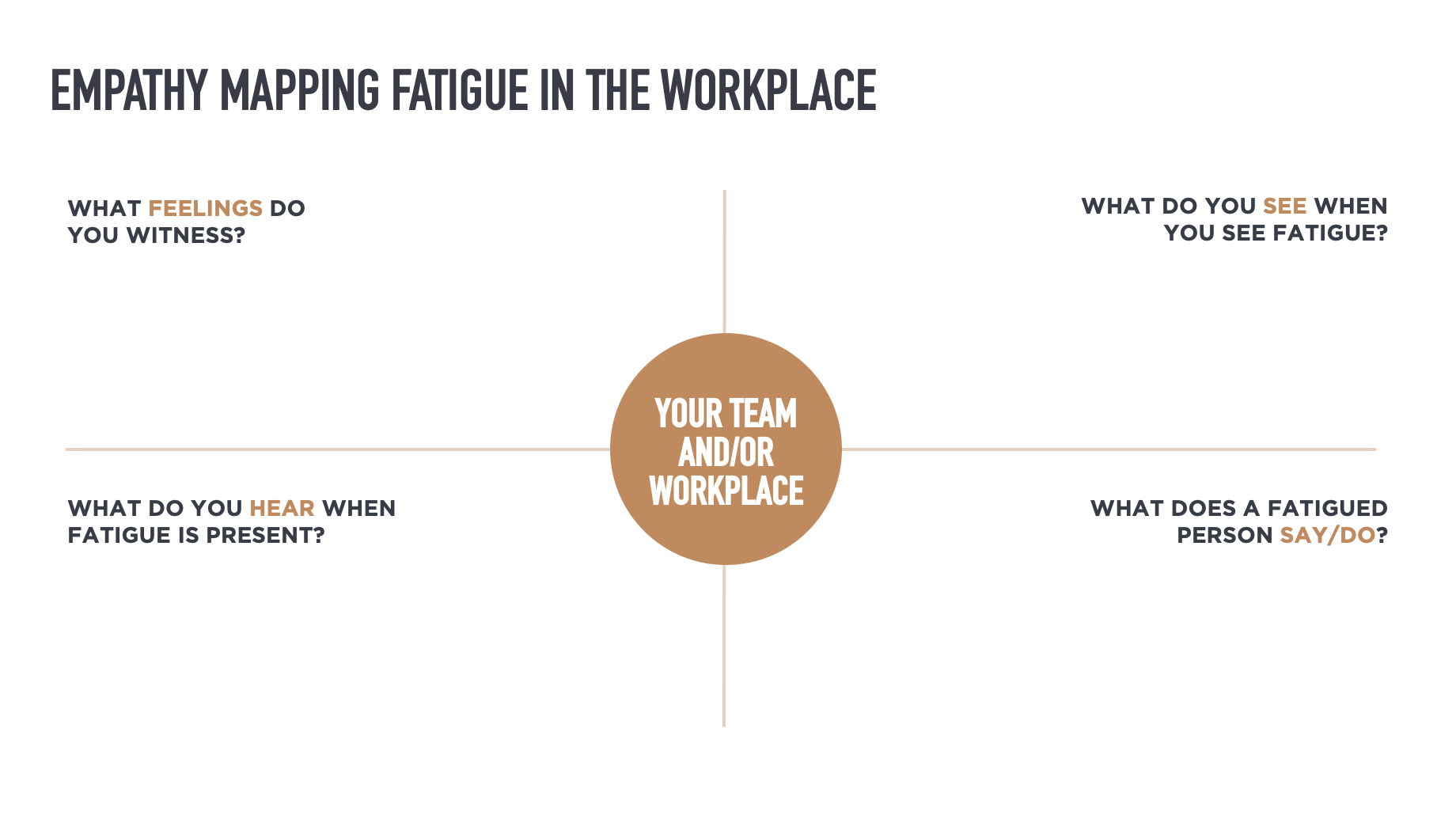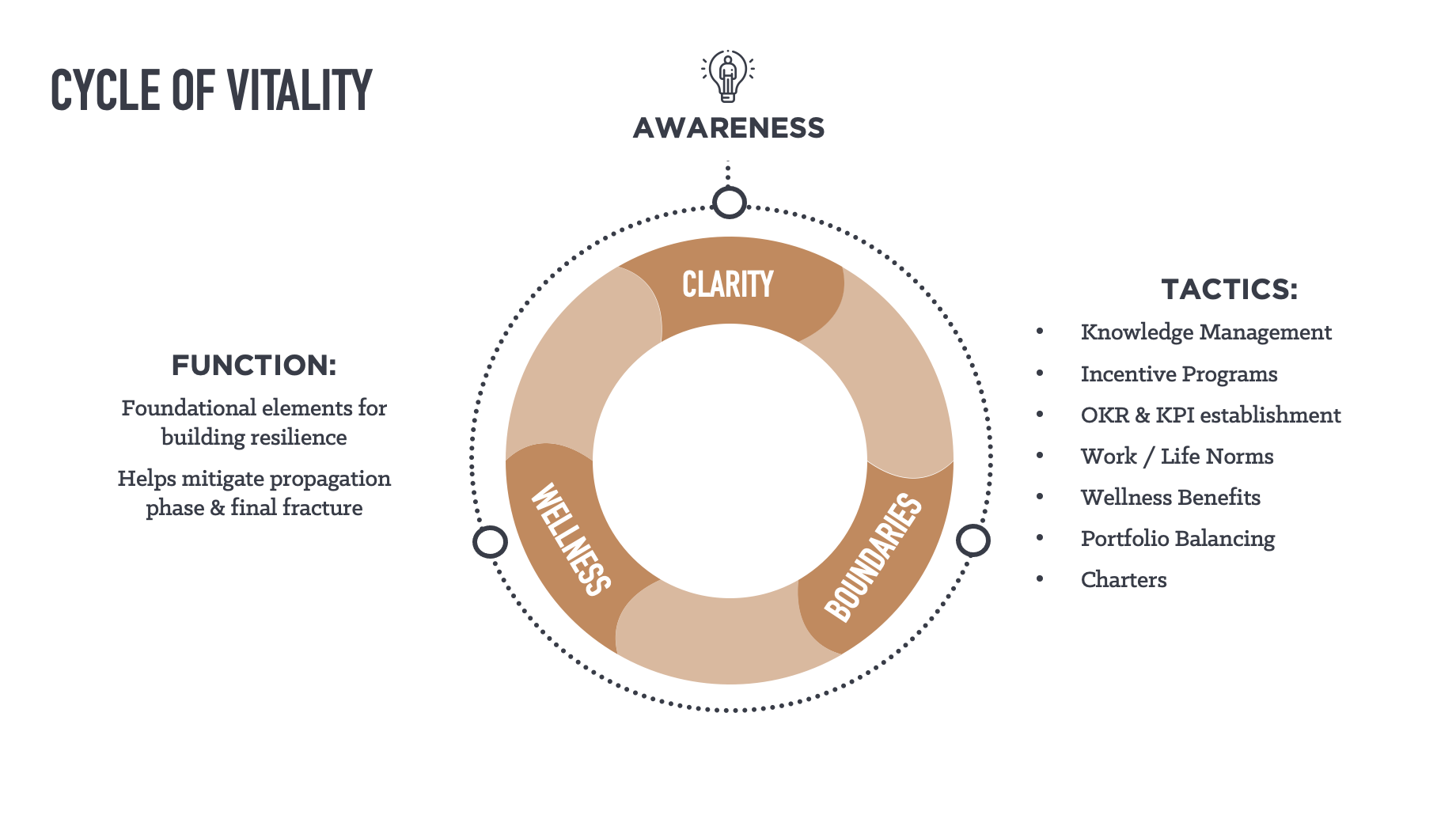The pandemic-induced ‘F’ word—Fatigue—continues to make news headlines nationally and globally. It’s still news, halfway through 2021, because employee change fatigue remains a focal point issue impacting worker performance and productivity.
Change fatigue, defined as the inevitable outcome of driving large-scale change across an organization—can quickly become change saturation when workers undergo too much change too quickly—impacting the healthy productivity of individuals, teams, and organizations.
In fact, even before the shutdowns and full impact of the COVID-19 pandemic on businesses, the Society for Human Resources Management published these worker findings on the subject of worker fatigue and burnout:
- 41% of employees report feeling burned out from their work
- 45% of employees feel emotionally drained from their work
- 44% of employees report feeling used up at the end of their workday
Those are staggering numbers, and the problem is getting worse. According to a more recent study by Oracle Corporation and Workplace Intelligence, 70% of people in the global workforce say the past year has been the most stressful 12 months of their lives, with 78 percent saying their mental health has been affected. Companies were forced to comply with federal and state COVID-19 mandates, requiring employees at every level to do their work differently. From dealing with sudden workforce reductions to Zoom-only meetings to working from the family kitchen table alongside kids out of school to social isolation, to complying with constantly changing on-site and statewide safety policies—workers have been contending with radical changes across every part of their lives.
At Propeller, we’ve labeled this #fatigueflood – which we define as:
Fatigue Flood: Extreme saturation and capacity from mental or physical exertion and/or emotional, social, or spiritual burnout.
Senior leaders and HR experts are on the frontlines, absorbing the impact of this “fatigue flood.” How can they enable continued and positive change management initiatives, essential to the health of their bottom-line, while also ensuring they’re providing needed resources and assistance to keep their workforce healthy and productive? It’s change management from two angles. Equally critical. And it requires a delicate and informed balance of leadership.
Propeller was recently invited to share one solution for managing this ongoing fatigue flood at ACMP’s Global Connect. In this blog, we’ll step through the key points and actionable takeaways of this presentation, in the hopes that workers at every level can more quickly assimilate and respond to change in a healthy, productive way.
# The Impacts of Fatigue
To really understand the impacts of fatigue, we asked our viewers to participate in an empathy mapping exercise. In this activity, we wanted folks to think through what fatigue feels and looks like at work, focusing on their immediate team, a working group, or a current project team. To better understand what fatigue looks like in your organization, you can use a simple framework like the one below. Empathy Mapping Fatigue in the WorkplaceYour Team and/or Workplace.

# Assessing Fatigue at the Individual, Team, and Organizational Levels
Change managers love assessments, particularly when we’re talking about something that’s hard to measure like fatigue. If your organization isn’t already conducting some sort of fatigue assessment through your employee engagement survey work, this is a good time to start.
We recommend customizing assessments to fit the needs of individuals, teams, and organizations. While there are many options for assessing fatigue, a simple pulse check like the example below can help managers and leaders understand where their team falls on the fatigue scale, which can help inform the team’s capacity and overall change saturation.

# The Vitality Roadmap – Replacing Fatigue with Vitality and Resilience
Once you’ve gauged what fatigue looks like in its various forms and how it shows up for individuals, teams, and organizations, we recommend creating a roadmap to replace fatigue with vitality and resilience. You can do this by utilizing the Cycle of Vitality.
Cycle of Vitality
Vitality is one of the most powerful contributors to individual, team, and organizational health and wellbeing.
We define Vitality as “The capacity to adapt, the energy to thrive, and the resilience to effectively change.”
How can we increase the vitality of individuals, teams, and organizations?
The Cycle of Vitality framework identifies three unique elements to combat fatigue, increase vitality, and build change resilience. Below are the activation points in each of the three elements.
1. Situational: Orientation through Awareness
Awareness is about being present in the moment. It helps you and others stay informed and educated about a topic or issue so you can influence attitudes, behaviors, and beliefs towards the achievement of a defined purpose or goal. Awareness takes many shapes in our lives: there’s task awareness, time awareness, results awareness, and self-awareness. All of which show up in various aspects of our lives and work. They also provide us with a valuable asset: an understanding of where we are NOW.
Awareness is the baseline and can be accomplished through a simple assessment.

2. Fatigue Prevention through Clarity, Wellness, and Boundaries
The second dimension includes sub-elements to ensure individual, team, and organizational health, alignment, and success.
Most of us probably work for an organization with decent policies, programs, and processes to increase clarity, boundaries, and wellness. People often think of this as the final step. They think that if we have these three things figured out, it’s enough, but it’s not enough to build healthy teams and cultures.
a. Clarity: knowing who and where you are, what you do, where you are going, and how you will get there.
b. Boundaries: terms of engagement that create a safe place for people to thrive.
c. Wellness: a conscious, self-directed, and evolving process of achieving full potential; a state of complete physical, mental, emotional, spiritual, and social well-being.
These are preventative measures to mitigate the negative impacts of fatigue, and we see this dimension as the focus of many functioning organizations. However, there’s another layer that leaders and change agents should consider as we strive to increase vitality.

3. Restoration: Activating Purpose, Belonging, and Creativity
The third dimension—the activation of purpose, belonging, and creativity—is preventative and restorative against the impacts of fatigue.

The purpose is the North Star—a shared sense of direction. It makes people feel aligned, motivated and committed.
The activation of Purpose = better, more sustainable Boundaries.
When people feel heard, seen, and valued, it improves motivation, health, and happiness, strengthens relationships, and increases connection.
A true sense of Belonging = increased Wellness.
The activation of creativity = individuals, teams, and organizations with activated creativity are more innovative, engaged, and healthy.
These elements are the deposits that truly differentiate teams and companies. Companies that prioritize this dimension and make it an integral part of their DNA become industry success stories—those that receive recognition for being a great place to work, inclusive and thriving companies at the top of their game.
# Summary
Change fatigue is a constant risk to the performance of individuals, teams, and organizations. Change fatigue was already a U.S. worker concern and is now accelerated by a pandemic that no one saw coming. If your organization isn’t already conducting some sort of fatigue assessment through your employee engagement survey work, all signs point to the value of engaging in this information-rich and proactive exercise toward employee and corporate health. When managers and leaders understand where their teams fall on the fatigue scale, they can help their people build change resiliency responses that keep their people thriving in growth organizations where they are able to do their best work.

Ciara Claraty often encourages her teams to sit in the fire of change. For Ciara, that means being present in ambiguity and discomfort, willing to change, and able to commit. For the teams she leads, it’s an approach and mindset that translate to an ability to make major changes for the better.
A gifted management coach and organizational change agent, Ciara excels at helping executives cultivate learning cultures, gain alignment, and discover their authentic leadership style. Her previous experience includes roles at Polycom, where she was instrumental in designing and implementing change management, training, and career development, diversity and inclusion, and process improvement strategies. Ciara holds a master’s degree in organizational development and leadership from LIOS Graduate College of Saybrook University and a bachelor's degree in general studies from Northwest University.

Riley Smith has spent a lifetime honing his ability to analyze challenges from a systems perspective. A background in sustainability fueled his aptitude for identifying inputs and outputs, locating responsibility and leveraging points within a system, and being comfortable with the complexity of people-created systems. He’s a strong believer that life and business alike are more enjoyable — and can be easier — when tackled as part of a team. He holds a master’s degree in sustainability from Arizona State University and a bachelor’s degree in biology from the University of Utah.





